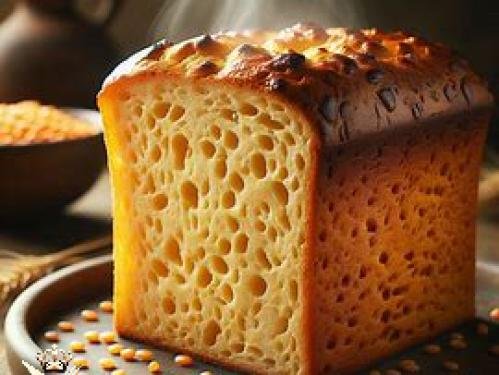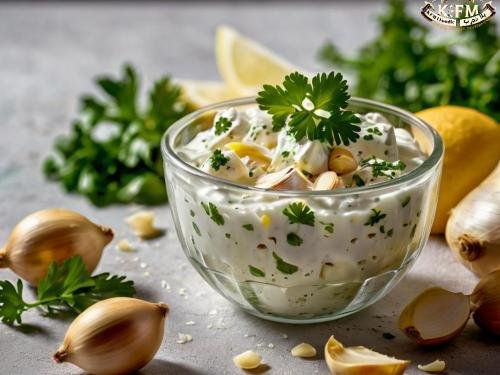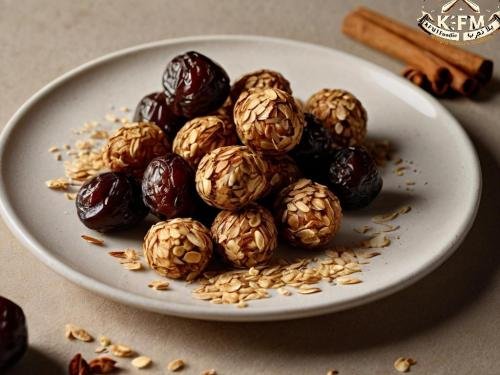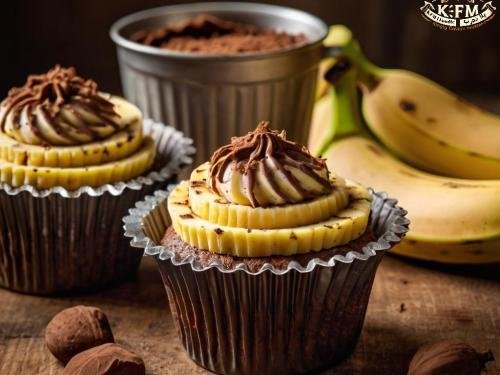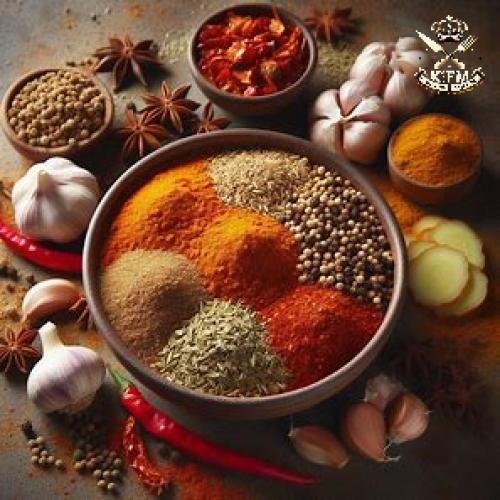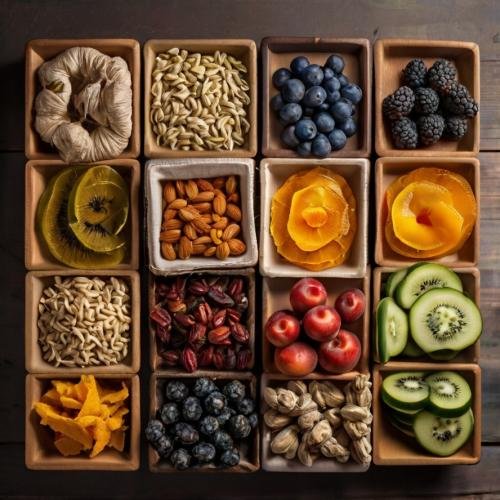Egyptian goulash filled with sausage, pastrami, or minced meat is one of the delicious traditional dishes served on the Ramadan table, combining rich flavors with various nutritional benefits. Goulash contains carbohydrates that provide the body with energy, while sausage, pastrami, or minced meat supply essential proteins for muscle building and promoting satiety. Mashed potatoes add important nutrients such as potassium, which supports heart health, while fried potatoes provide extra energy, though excessive consumption is not recommended. Green salad is an excellent source of vitamins and minerals, containing fiber that improves digestion and promotes gut health. Eating this meal provides the body with an ideal nutritional balance during Ramadan.
Ingredients:
- 1 pack of goulash pastry (500g)
- 250g sausage, pastrami, or minced meat
- 1 chopped onion
- 2 tbsp vegetable oil
- 1 tsp salt
- ½ tsp black pepper
- ½ tsp mixed spices
- ½ cup melted butter
- 1 cup milk
- 1 egg
Preparation Method:
Preheating the Oven:
Preheat the oven to 180°C (350°F) and let it heat thoroughly while you prepare the other ingredients.
Preparing the Filling:
- In a large pan over medium heat, add 2 tablespoons of vegetable oil and let it heat for a few seconds.
- Add one finely chopped onion to the pan and stir continuously for 3-4 minutes until it becomes soft and translucent.
- Add 250g of sliced sausage (or chopped pastrami or minced meat).
- Stir well and cook over medium heat for 7-10 minutes until the meat is fully cooked.
- Add ½ teaspoon of salt, ¼ teaspoon of black pepper, and ½ teaspoon of mixed spices, and mix well to combine all flavors.
- Once the filling is ready, remove it from the heat and let it cool slightly before using it to fill the goulash.
Assembling the Goulash Layers:
- Grease a medium-sized (rectangular or square) baking tray with a light layer of melted butter to prevent sticking.
- Place one sheet of goulash pastry in the tray and brush it with melted butter using a kitchen brush.
- Repeat this step with half of the goulash sheets, brushing each layer with a bit of butter to ensure crispiness after baking.
Adding the Filling:
- After placing half of the goulash sheets, spread the filling evenly over them, ensuring it reaches all corners for a balanced taste.
Sealing the Goulash:
- Place the remaining goulash sheets over the filling, following the same method and brushing each sheet lightly with butter.
- Once done, gently press the top layers to ensure they stick together with the filling.
Preparing the Milk and Egg Mixture:
- In a small bowl, whisk 1 cup of milk with 1 egg using a fork or hand whisk until well combined.
- Pour the milk and egg mixture evenly over the goulash to give it a soft texture inside and a crispy outer layer.
Cutting the Goulash Before Baking:
- Using a sharp knife, cut the goulash into squares or rectangles before placing it in the oven for easier serving after baking.
Baking the Goulash:
- Place the tray in the preheated oven and bake for 30-35 minutes, or until the surface turns golden and crispy.
- You can turn on the broiler for an additional 2-3 minutes for a deeper golden color.
Serving:
- Remove the goulash from the oven and let it cool slightly for 5-10 minutes before serving.
- Serve it hot with mashed or fried potatoes and a green salad for a complete and delicious meal.
Enjoy Egyptian goulash stuffed with sausage, pastrami, or minced meat alongside your favorite side dishes! 😋
🔹 Tips for Ensuring Recipe Success
How to achieve crispy layers without them becoming dry?
To get crispy goulash without drying out:
- Use a moderate amount of butter or oil between the layers; too much can make it greasy, and too little can make it dry.
- Ensure the milk and egg mixture is evenly distributed to give the goulash a soft texture inside.
- Do not cover the goulash after removing it from the oven, as the rising steam may make it soggy instead of crispy.
What are healthy alternatives to using butter?
If you want to reduce fat in the recipe, you can use:
- Olive oil instead of butter, giving a unique flavor and crisp texture.
- Spraying vegetable oil between layers instead of brushing each sheet with butter.
- Using yogurt in the coating mixture instead of full-fat milk for a lighter result.
Can goulash be replaced with another type of dough?
Yes, some alternatives include:
- Phyllo dough, which is similar to goulash but thinner and requires thorough brushing between layers.
- Puff pastry, which gives a different result, making it flakier and more puffed.
- Tortilla bread as a quick alternative for those who don’t have time to prepare traditional goulash.
Recipe Variations
Can goulash be made vegetarian?
Yes, you can replace the filling with plant-based ingredients like:
- A mixture of sautéed vegetables such as bell peppers, carrots, zucchini, and spinach.
- White cheese or cottage cheese with herbs for a light and delicious filling.
Can the meat be replaced with chicken?
Absolutely! You can use minced chicken or sautéed chicken pieces with onions and spices instead of minced meat. This method gives the recipe a lighter flavor, perfect for those who prefer chicken.
🔹 Common Mistakes When Making Goulash and How to Avoid Them
Why does goulash turn out soft instead of crispy?
- Adding too much milk and egg mixture can make the goulash overly soft.
- Not preheating the oven properly before placing the tray can result in uneven baking.
- Placing the tray in the middle of the oven ensures even heat distribution across all layers.
Why does the filling leak out during baking?
- Not sealing the edges properly when layering the goulash.
- The filling should be cool before placing it between the layers to prevent liquid from escaping during baking.
- If the filling contains a lot of fat, it's best to drain it well before adding it to the goulash.
🔹 Creative Serving Ideas
How can goulash be served in different ways?
- Serve it with garlic yogurt sauce or spicy tomato sauce for extra flavor.
- Cut it into small squares and serve as appetizers at gatherings and events.
- Prepare it in individual cupcake molds for an attractive and easy-to-serve presentation.
🔹 FAQ Section
Can phyllo pastry be prepared in advance and stored in the fridge before baking?
Yes, it can be prepared before baking and stored covered in the refrigerator for 6-8 hours. When needed, bake it directly without waiting for it to return to room temperature.
What is the best way to reheat phyllo pastry to keep it crispy?
- Reheat in the oven at 180°C (350°F) for 10 minutes to restore crispiness.
- Use an air fryer at 170°C (340°F) for 5 minutes.
- Avoid using the microwave, as it may make it too soft.
Can phyllo pastry be frozen after baking? If so, what is the correct way to reheat it?
Yes, it can be frozen after baking, but it should be well wrapped in aluminum foil or placed in an airtight bag.
To reheat, place it directly in the oven at 180°C (350°F) for 15-20 minutes until crispy again.
What are the best healthy alternatives for preparing phyllo pastry without butter or excess fat?
- Use olive oil or coconut oil instead of butter.
- Lightly spray the phyllo layers with oil spray instead of brushing them entirely.
- Prepare the milk and egg mixture using low-fat milk for a healthier option.
How can the recipe be made suitable for a low-calorie diet?
- Use whole wheat phyllo pastry if available.
- Reduce the amount of butter or use healthy oils in moderation.
- Choose healthy fillings such as grilled chicken, vegetables, or low-fat cheese instead of fatty meats.
Calories and Nutritional Values
1 Pack of Filo Pastry (500g)
- Calories: 1650
- Carbohydrates: 320g
- Protein: 40g
- Fat: 30g
- Nutritional Benefits: Provides carbohydrates that supply energy to the body, making it a suitable choice for a Ramadan breakfast.
250g Sausage, Pastrami, or Minced Meat
- Calories: 500-700 (depending on the type of meat)
- Protein: 40-50g
- Fat: 35-50g
- Nutritional Benefits: A rich source of protein essential for muscle building, and contains beneficial fats when choosing lean options.
1 Chopped Onion
- Calories: 40
- Vitamin C: 7mg (10% of daily requirement)
- Nutritional Benefits: An antioxidant that supports the immune system and improves heart health.
1 Cup of Milk
- Calories: 120
- Calcium: 300mg (30% of daily requirement)
- Nutritional Benefits: Strengthens bones and teeth due to its calcium and vitamin D content.
½ Cup Melted Butter
- Calories: 800
- Fat: 88g
- Nutritional Benefits: Provides energy to the body, but should be consumed in moderation.
Mashed or Fried Potatoes
- Calories: 150-350 depending on preparation method
- Potassium: 500mg (15% of daily requirement)
- Nutritional Benefits: A rich source of carbohydrates and potassium, supporting heart and muscle health.
Green Salad
- Calories: 50-100 depending on ingredients
- Fiber: 3-5g
- Nutritional Benefits: Promotes digestion, helps with satiety, and contains essential vitamins and minerals for overall health.
This meal combines various nutritional benefits, making it ideal for Ramadan breakfast, as it provides energy, protein, and essential vitamins for a healthy body. 😊














